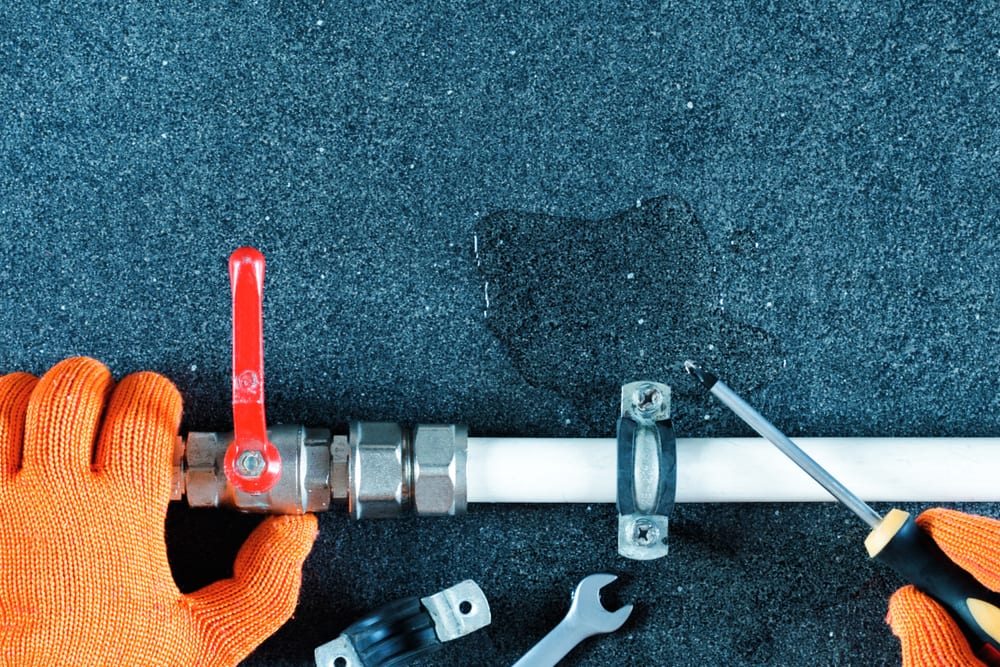Do you find yourself hunting for know-how about Finding hidden leaks?

Early discovery of leaking water lines can minimize a possible catastrophe. Some tiny water leakages may not be noticeable.
1. Take A Look At the Water Meter
Inspecting it is a guaranteed way that assists you find leakages. If it moves, that shows a fast-moving leakage. This indicates you may have a slow-moving leak that could also be underground.
2. Examine Water Usage
If you find sudden adjustments, in spite of your intake being the very same, it indicates that you have leaks in your plumbing system. An unexpected spike in your bill indicates a fast-moving leakage.
A constant boost every month, also with the exact same habits, shows you have a slow-moving leakage that's also gradually intensifying. Call a plumber to thoroughly inspect your property, especially if you feel a warm area on your floor with piping below.
3. Do a Food Coloring Test
When it comes to water consumption, 30% comes from commodes. Examination to see if they are running appropriately. Decline flecks of food color in the tank and wait 10 minutes. If the color somehow infiltrates your dish during that time without flushing, there's a leak in between the tank as well as dish.
4. Asses Outside Lines
Do not forget to examine your outdoor water lines as well. Should water leak out of the link, you have a loose rubber gasket. One tiny leakage can waste tons of water and also spike your water expense.
5. Inspect and Evaluate the Circumstance
Homeowners ought to make it a behavior to check under the sink counters and even inside closets for any type of bad odor or mold and mildew growth. These 2 red flags suggest a leakage so prompt attention is called for. Doing regular examinations, even bi-annually, can conserve you from a significant issue.
If you understand your residence is currently old, keep a careful eye on your heating units, hoses, pipes and so on. Look for stainings as well as deteriorating as a lot of devices as well as pipelines have a life span. They will additionally normally wear away as a result of tear as well as wear. Do not wait for it to rise if you presume leaking water lines in your plumbing system. Call an expert plumber as soon as possible so you don't wind up with a horrible mess in your home.
Early detection of dripping water lines can alleviate a prospective catastrophe. Some little water leakages might not be noticeable. Checking it is a guaranteed means that aids you uncover leaks. One tiny leakage can throw away heaps of water and also increase your water bill.
If you presume leaking water lines in your plumbing system, don't wait for it to rise.
The Dangers of Undetected Water Leaks
Mold
One of the most common results of undetected water leaks in your home is mold. Under the right conditions, mold can begin to grow and spread in just a day or two.
Moisture from water leaks combined with humidity and lack of ventilation allow mold spores to germinate and start spreading.
And while household mold doesn’t carry the same health risks as substances like asbestos, they can cause allergic reactions in people sensitive to them or with asthma.
Structural Damage
When water leaks occur in places we can’t see — above the ceiling, behind walls or beneath floors — they often have time to do some serious damage before making themselves known.
You might notice cracks or bubbles appear in your walls or a slow drip or water from the ceiling.
These are signs of water leaks and buildups in the structure of your home. If you don’t jump on these problems soon enough, the wood frame that supports your house could start rotting, leading to costly repairs and increasing the risk of disasters like ceiling or wall collapses.
Water Waste
According to the Alliance for Water Efficiency, the average home can lose anywhere from 2,000 to 20,000 gallons of water per year due to leaks.
High numbers like that might make you imagine a burst pipe spewing out water. But believe it or not, even a small, constant drip from a kitchen sink could add up to over a thousand gallons of wasted water in a single year.
And if you live in a place where you pay for every gallon of water you use, that adds up to a lot of dollars down the drain. So we understand leaks are bad. Let’s take a look at some of the common (and not-so- common) water leaks you might find around your home.
Flush Valve Flapper
The flush valve flapper is a rubber flap that sits above the flush valve at the bottom of the tank. It’s attached to the flusher with a chain. Over time, it can get worn out and lose its seal, causing an endless flow of water into the toilet bowl.
These leaks are hard to detect since they’re usually silent, but there’s a little insider trick you can use with just a little dye or food coloring:
Put a few drops in the toilet tank. Check the water in your toilet bowl 15 minutes later. If any of the color made it into the toilet bowl, you’ll know what the culprit is.
Fill Valve
The fill valve is what replenishes your toilet’s tank water after you flush. If you’ve ever looked inside your toilet tank and seen water gushing out of an upright plastic valve, that’s a faulty fill valve.
https://meetflo.com/blogs/flo/how-to-find-and-repair-water-leaks-a-comprehensive-guide

I found that post on Finding hidden leaks when doing a search on the internet. Enjoyed our article? Please share it. Let other people find it. Many thanks for taking the time to read it.